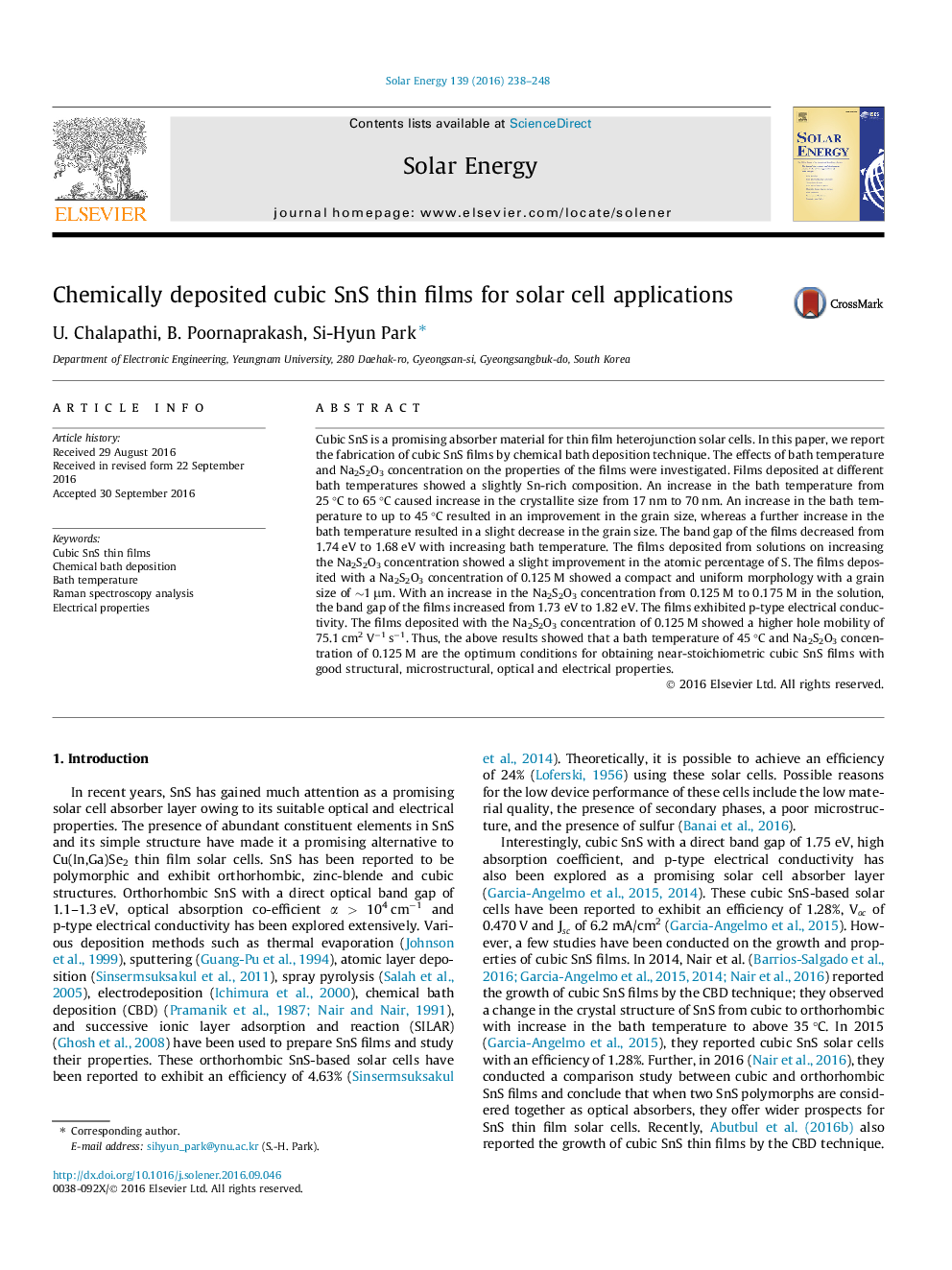| Article ID | Journal | Published Year | Pages | File Type |
|---|---|---|---|---|
| 5451387 | Solar Energy | 2016 | 11 Pages |
Abstract
Cubic SnS is a promising absorber material for thin film heterojunction solar cells. In this paper, we report the fabrication of cubic SnS films by chemical bath deposition technique. The effects of bath temperature and Na2S2O3 concentration on the properties of the films were investigated. Films deposited at different bath temperatures showed a slightly Sn-rich composition. An increase in the bath temperature from 25 °C to 65 °C caused increase in the crystallite size from 17 nm to 70 nm. An increase in the bath temperature to up to 45 °C resulted in an improvement in the grain size, whereas a further increase in the bath temperature resulted in a slight decrease in the grain size. The band gap of the films decreased from 1.74 eV to 1.68 eV with increasing bath temperature. The films deposited from solutions on increasing the Na2S2O3 concentration showed a slight improvement in the atomic percentage of S. The films deposited with a Na2S2O3 concentration of 0.125 M showed a compact and uniform morphology with a grain size of â¼1 μm. With an increase in the Na2S2O3 concentration from 0.125 M to 0.175 M in the solution, the band gap of the films increased from 1.73 eV to 1.82 eV. The films exhibited p-type electrical conductivity. The films deposited with the Na2S2O3 concentration of 0.125 M showed a higher hole mobility of 75.1 cm2 Vâ1 sâ1. Thus, the above results showed that a bath temperature of 45 °C and Na2S2O3 concentration of 0.125 M are the optimum conditions for obtaining near-stoichiometric cubic SnS films with good structural, microstructural, optical and electrical properties.
Related Topics
Physical Sciences and Engineering
Energy
Renewable Energy, Sustainability and the Environment
Authors
U. Chalapathi, B. Poornaprakash, Si-Hyun Park,
